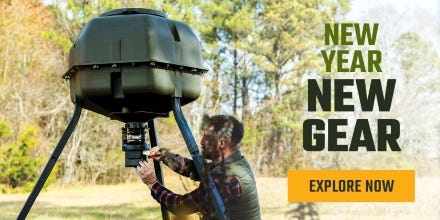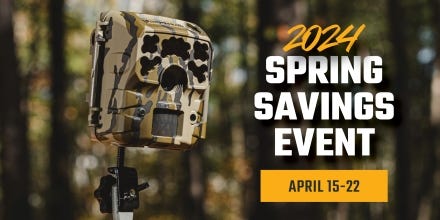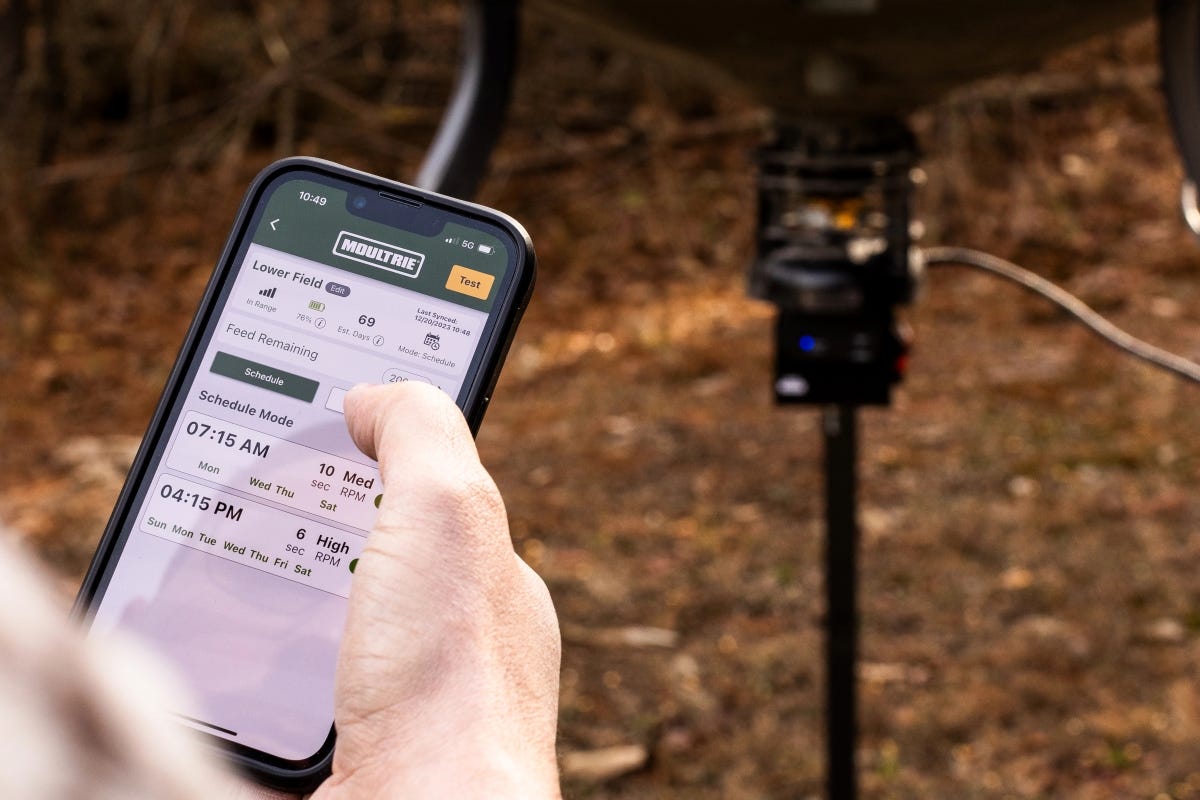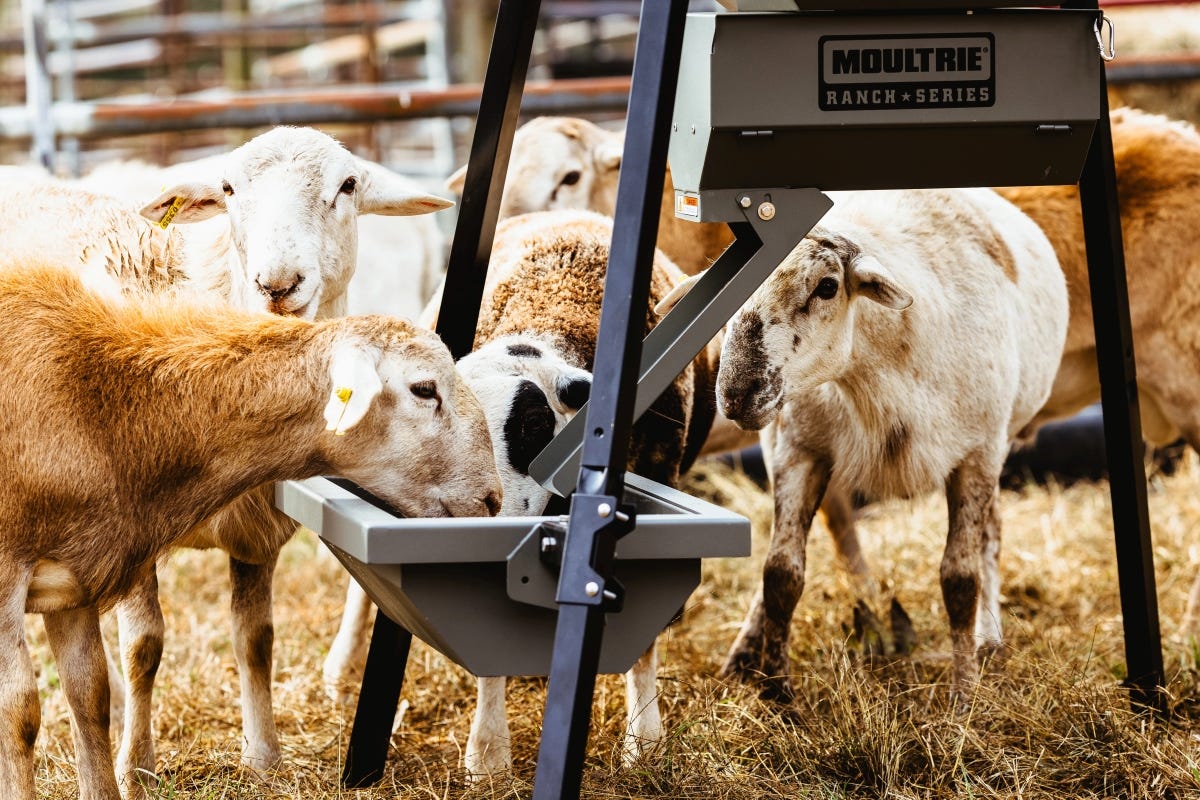- Dec 9, 2018
Late-Season Tactics: Find the Food

Food sources can range from residual mast, such as locust beans, waste grains left over from cut crop fields and food plots. Many hunters who hunt lands that don’t have major agriculture or have food plots to hunt can be at a disadvantage this time of year, but certainly not out of the game.
Let’s start by talking about cut crops and food plots. As deer start to really transition back on feed, they will once again start to become very predictable in their travel to and from the food source. As the temps get colder and the need for food to stay warm is greater, deer tend to bed extremely close to the food. This is smart on their part, they don’t want to use any more energy than needed, so bedding close allows them to conserve energy.
Placing a cellular-game camera in and around these feeding locations can be of great benefit, allowing you to get detailed intel without causing disturbance in the area.
Once you have a good line on where deer are entering the food source, hang your stand where you are the least likely to have a deer downwind, even if it means the deer have to enter the area well off from your stand location. Remember, by now deer have survived weeks and months of hunting pressure so they are on edge. The slightest disturbance is enough to push them from the area. Hanging a couple stands or using a climber will allow you to hunt multiple wind directions for a location and take advantage of how the deer are entering and exiting the feeding area.
Also, pay close attention to a rising moon and setting moon. Deer move earlier in the evening on a rising moon and later in the morning when the moon sets after daylight. However, during major cold temperatures, deer will feed every few hours regardless, so you have a chance of catching them on their feet at any time of the day.
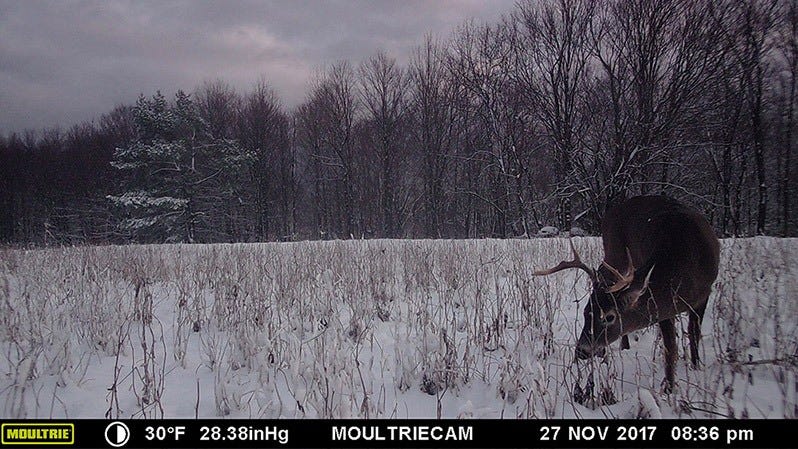
For those areas where no major cut crop fields, food plots or baiting is allowed, you’ll have to do a little more research. Deer will be feeding on the native plants, left-over acorns and late-season foods such as locust beans. Locate areas with good locust groves and see if there are beans dropping. These beans are loaded with protein and have a sweet flavor when they get dry. Deer love these beans and even if cut fields are available, will often stage around a grove prior to moving out into the ag fields.
Unlike food plots and cut crops, deer will likely eat these native-type food sources up and move to another location to find more food. You’ll need to have other areas with food located and have stands hung. In fact, not all deer on a farm will be feeding in one small area. There will likely be units of deer using multiple areas, so plan for this and use this to your advantage. Hunt an area once or twice and move to another area to keep things as fresh as possible for as long as possible.
In states where it is legal to use corn and other types of strategically placed food to attract deer, this is an excellent time to have feeders running. Place feeders near bedding cover where does and bucks will be visiting the feed location regularly.
The temperatures can be brutal to hunt during the late season, but if you have a buck tag left to fill, this can be a great time to fill it. Mature deer become more predictable than other times of year, simply because they have to eat to survive. Go brave the elements and tag a buck of a lifetime.
About the Author: Chris Parrish has won turkey calling contests at the highest level and has hunted up and down this continent. He has a well-honed knowledge of the habits and patterns of mature whitetails — having recorded 22 bucks in the Pope & Young and Boone & Crockett record books. He’s been an ambassador for PRADCO Outdoor Brands as well as many more. Chris has a passion for sharing his knowledge with others, so look for more of his articles here and at Moultrie Products, Summit Stands and CODE Blue Scents.

